#printers specimens
Photo
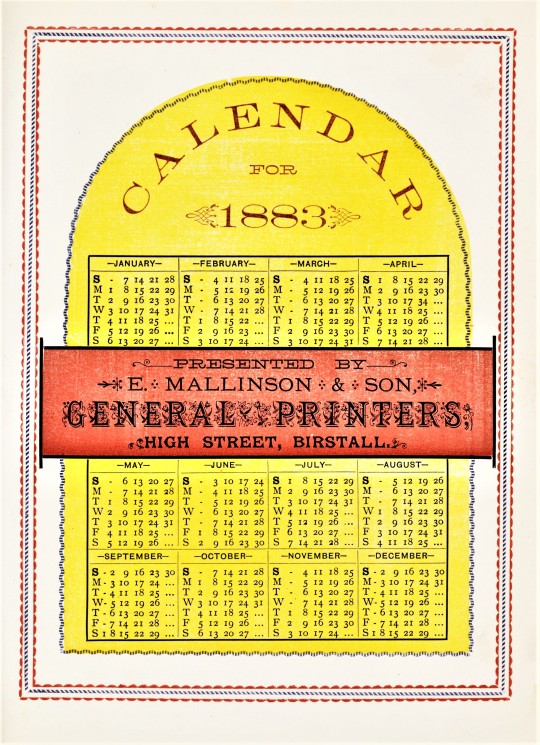


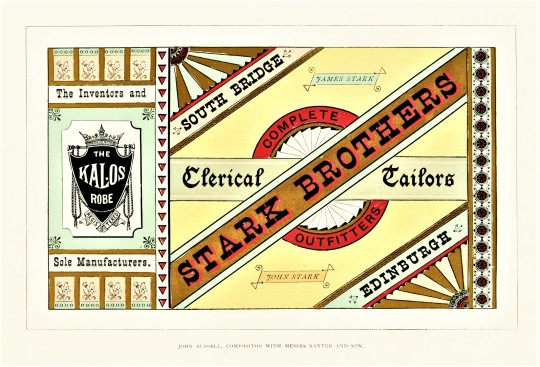
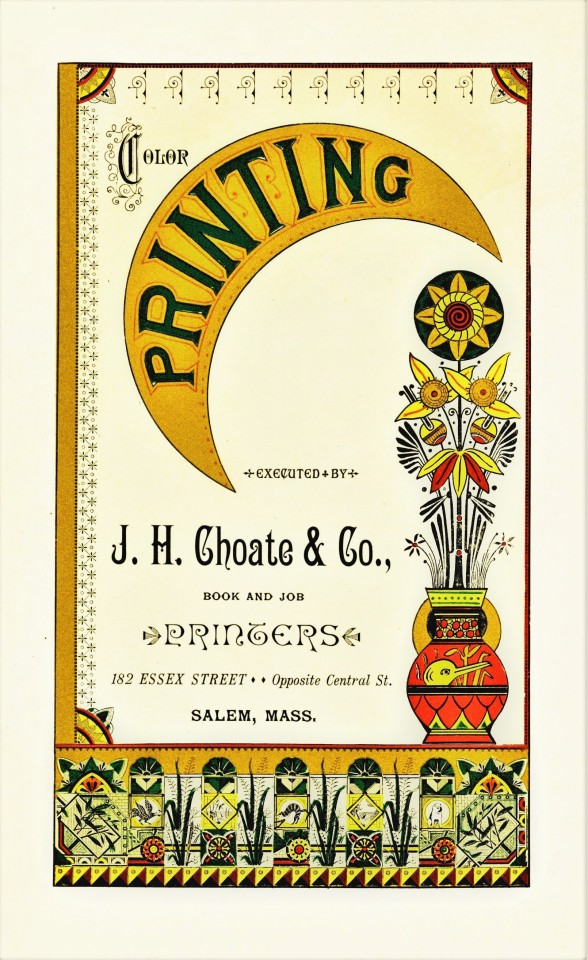
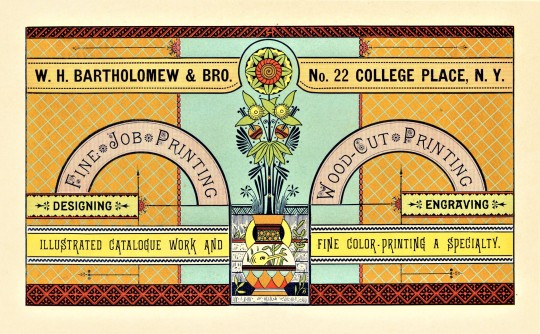
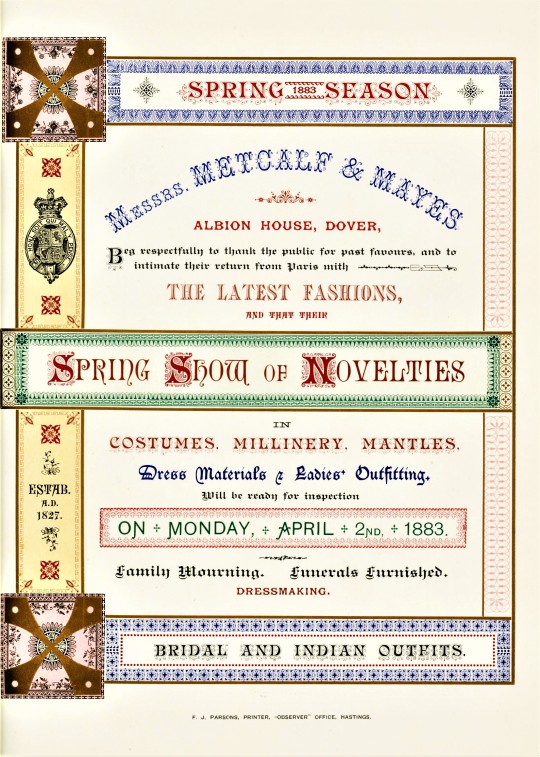
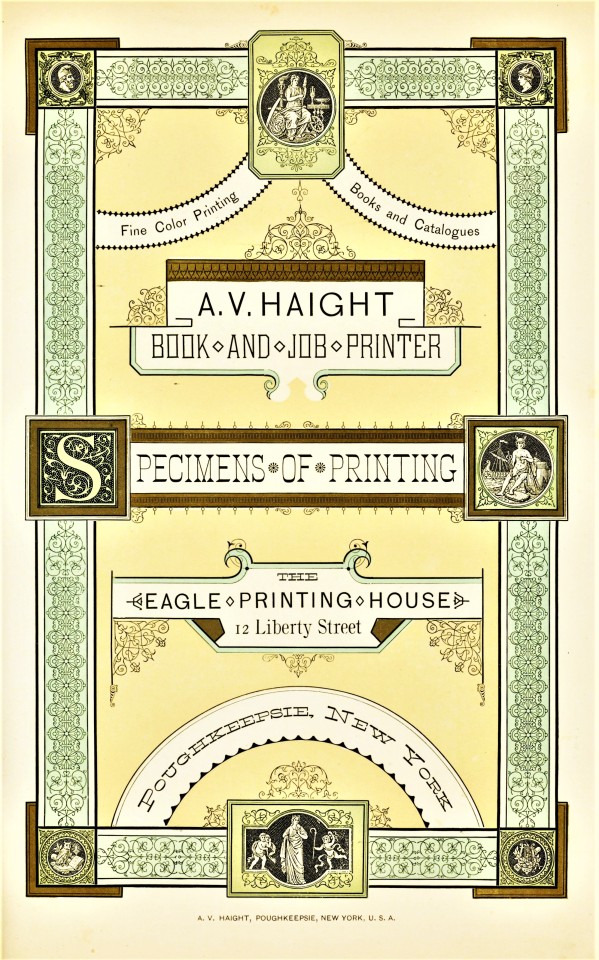
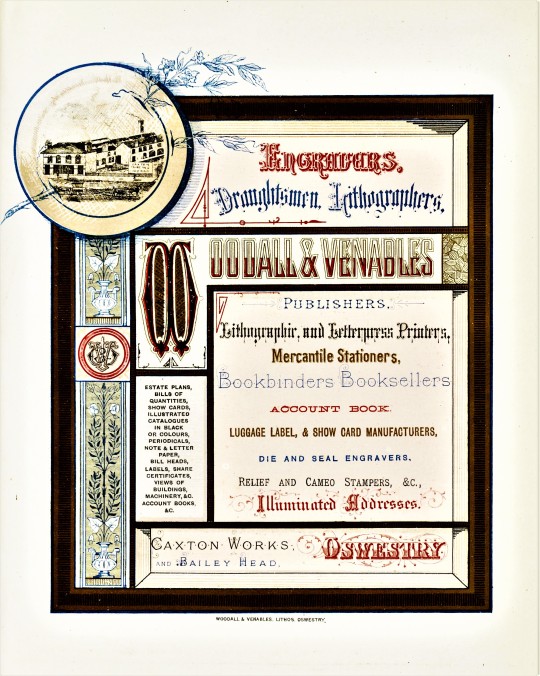
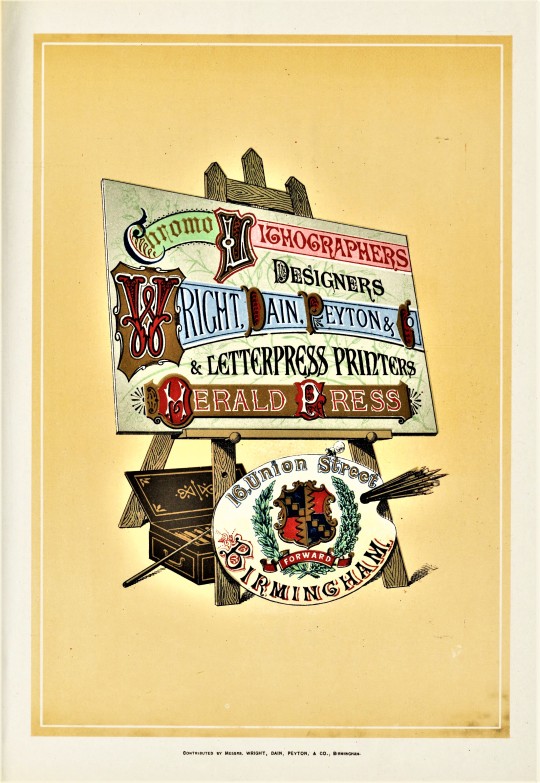
Typography Tuesday
This week we present a few specimen pages from Volume IV, 1883, of The Printers’ International Specimen Exchange published in London for The Paper and Printing Trades Journal by Field & Tuer at “The Leadenhall Press.” The specimens shown here were printed by English and American printers.
The Exchange was conceived during the Caxton Celebration of 1877 as an expansion of the “Specimens” column appearing in the Paper & Printing Trades Journal edited by Andrew White Tuer. As an annual subscription publication for the “technical education of the working printer,” the Exchange became very influential and came out annually (with the last two volumes covering two-year periods) from 1880 to 1898. John Ruskin praised the goals of the project, and Queen Victoria accepted a copy of Volume VI, which we also hold. Our copy has the half-vellum deluxe binding side-stitched with catgut.
View a post on Volume VI of The Printers’ International Specimen Exchange.
View more Typography Tuesday posts.
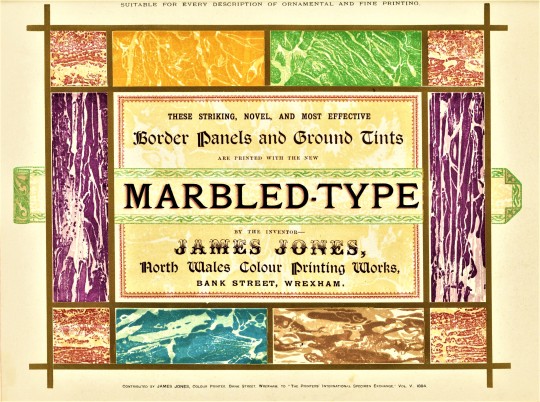
#Typography Tuesday#typetuesday#Typography Tuesday#The Printers’ International Specimen Exchange#The Paper and Printing Trades Journal#Field & Tuer#Andrew White Tuer#Leadenhall Press#type specimen books#specimen books#printers specimens#type specimens#print exchanges#19th century type
50 notes
·
View notes
Text

#I've upgraded from printer paper to sketchbook#Still bad tho#Unknown specimen 1#Specimen 11#Specimen 2#Specimen 1#Specimen 6#Specimen 8#spookys jumpscare mansion#spookys house of jumpscares#Spooky herself#Specimen 10#Goop#Parasite#Food demon#Cardboard cutout#Imscared#Mask salesman#deer lord
12 notes
·
View notes
Text
eceeef
#what happens if i add a lot of tags#Lorem Ipsum is simply dummy text of th#when an unknown printer took a galley of type and scrambled it to make a type specimen book.#eqwfc32cer4#vebt#erbtgvebv43#3t5bvtrre#egt#rbv ergb#bvt5v35r3w#5btv354bv5trv#5bv5r#5bt4y4by#4hb46hb64#hiiiiiiiiiiiiiiiiiiiii#ugh#mile long tag go#wrcv24re34wv#3tv343r t5bhbretbtr#by4e6gvtrebv45ve#retrgvbt43
1 note
·
View note
Text
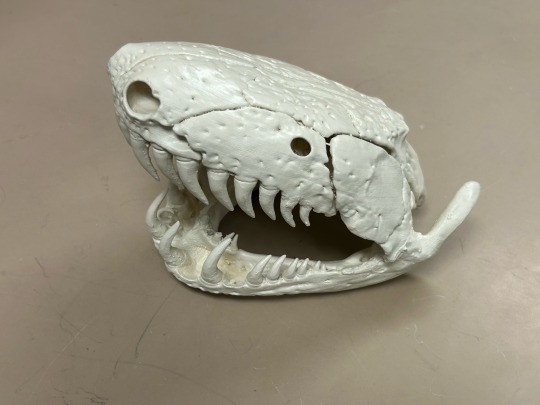
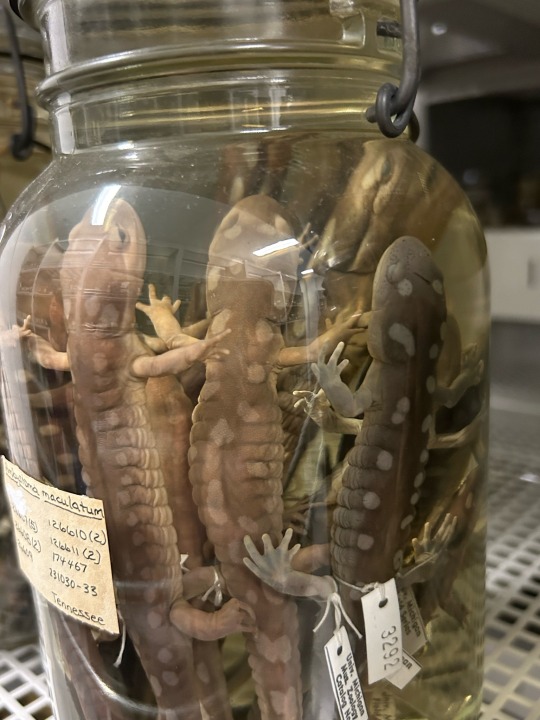

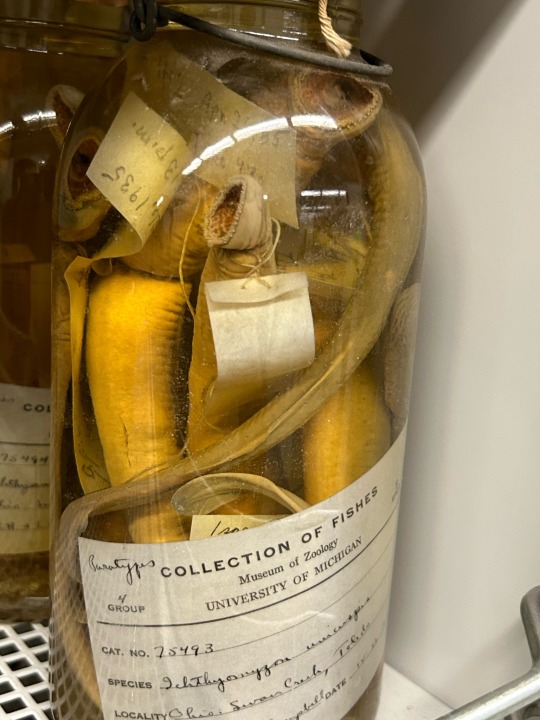

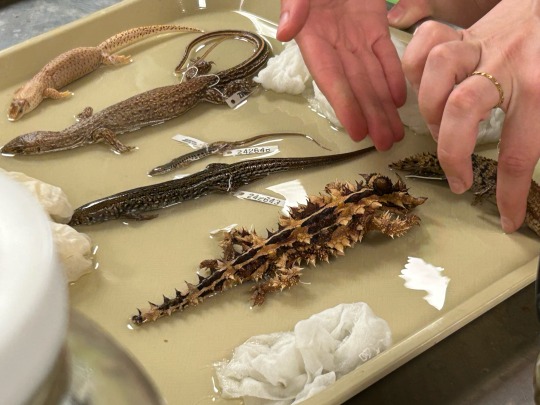
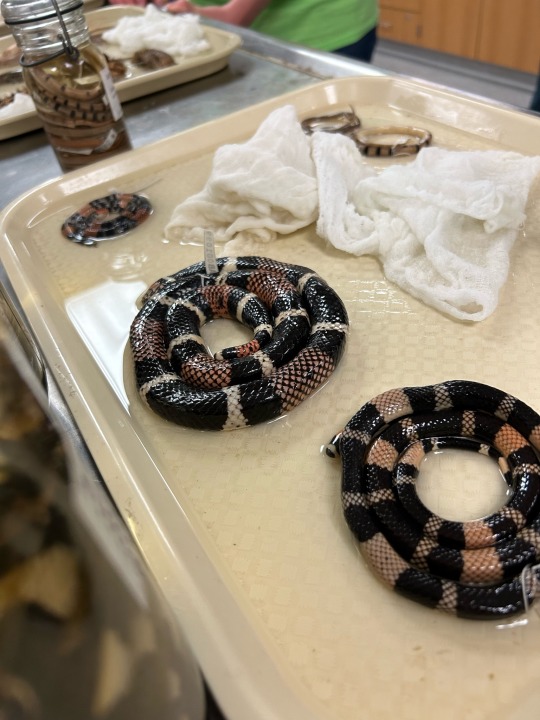
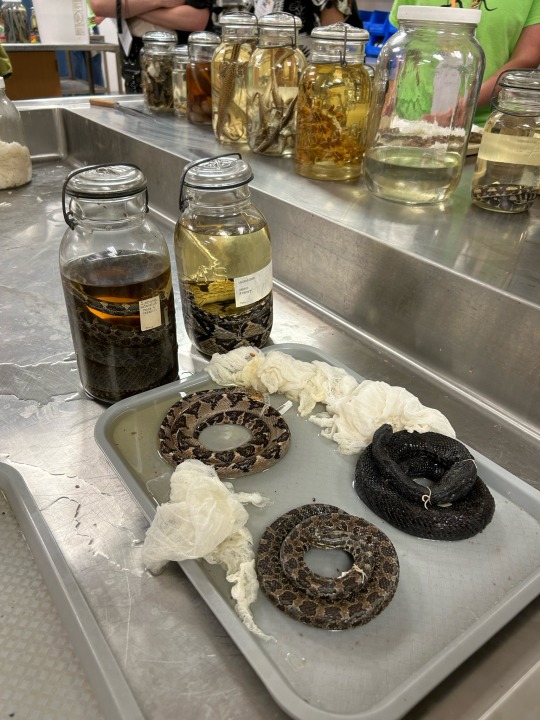
Images from the herpetology section of the university of Michigan zoological collections museum.
I have mixed feelings about voucher specimens, I didn't love being around all of these dead things, but this was really cool.
The University of Michigan, supposedly, has the largest voucher collection of caecilians institution in the United States (and possibly the world?).
They have a CT scanner and 3-D printer on site, and produced this model of a caecilian skull right there.
This facility is not open to the general public, but there was a tour for the SSAR herpetology conference. 
* some highlights for me were this Sicilian collection, a thorny devil, the skull model, and the huge paradoxical frog tadpole (which is bigger than the adult frog).
- Paxon
277 notes
·
View notes
Text
🌿 Herb Of The Day

Title: Lilac
Gender: Feminine
Element: Water
Planet: Venus
📜 Folklore & History 📜
Lilacs are an old, old, species that originated in Persia and then traveled to Europe. They were brought to America in 1750 and then planted at New Jersey Governor Wentworth’s home. Other prominent men fell in love with lilacs. They were reportedly one of Thomas Jefferson’s favorite flowers, and he documented his lilac-planting-methods in 1767. George Washington followed suit and moved existing lilacs on his property to his garden in 1785.
In Greek mythology, Pan, the god of the wild, chased a nymph named Syringa. She turned herself into a lilac bush to escape Pan, and in anger, he broke off the reed-like branches which made pipes. With regret, he tried kissing the broken branches, and as his air pushed over them, sounds were made. Lilacs were responsible for the creation of “Panpipes.”
Russian folklore believed that hanging lilacs above a baby’s bed would bring the child wisdom.
American folklore thought that lilacs could drive away evil and that placing them in a haunted house would displace ghosts. Thought to be symbolic of “old love,” Victorian widows often wore lilacs as a sign of remembrance. One hundred and fifty-five years ago today, April 15th, Abraham Lincoln died after being shot by John Wilkes Booth. Any American — and much of the world — knows the story of the self-educated, country lawyer who became one of our nation’s most beloved presidents. But what many Americans might not realize is how the death of Lincoln reverberated into so many areas of our collective psyche, including literature and horticulture, thanks to Walt Whitman. Walt Whitman was a reporter, printer, writer, traveler and Civil War nurse who is considered one of America’s greatest poets. He self-published Leaves of Grass and worked on it throughout his lifetime, eventually modifying it so that there are eight different editions. Whitman felt a great affinity with President Abraham Lincoln, and when Lincoln was assassinated in the spring of 1865, Whitman grieved.
He wrote years later in Specimen Days about learning of the President’s death:
"I remember where I was stopping at the time, the season being advanced, there were many lilacs in full bloom. By one of those caprices that enter and give tinge to events without being at all a part of them, I find myself always reminded of great tragedy of that day by the sight and odor of these blossoms. It never fails."
While lilacs are first to bloom, their flowers are short-lived. The heady fragrance lingers sweetly at first, but then the blooms start to die, leaving a heavy, cloying smell. One of the first flowers of spring, lilacs contain a natural compound called indole that’s found in flowers — and feces. It’s that undercurrent of the “bottom note” of fragrance that suggests decay and death.

🔮 Metaphysical Properties 🔮
The beautiful May-blooming lilac is one of the loveliest tokens of spring. But they are much more than beautiful shrubs with showy, sweet-smelling flowers. Originally lilacs were planted to repel all evil. Planted near the entryway, lilacs were believed to send out protective vibrations. When the flowers are cut and brought into the home they cleanse any living space. And they'll also remove any unwanted spiritual presence. Blue and white varieties work well for this purpose. Since lilacs are ruled by Venus, they are also used in love spells. Try placing some pink lilacs on your altar while performing a love spell. The dried flowers make a powerful addition to any love sachet.

🍴⚕️ Culinary & Medicinal Properties
The simplest way to enjoy lilacs is as an infusion of the flowers for a lilac sugar. The sugar can then be used in recipes to add lilac flavor to baked goods. This also works with a lilac simple syrup which is just a liquid form of the same thing that’s perfect for making cocktails. For my money though, I think lilac infused honey sounds the best. The sweet floral flavor of lilacs translates beautifully into an ice cream base.
To prevent the recurrence of disease, lilac flowers were used to help strengthen the system and prevent relapse after a patient had healed. They’re said to be specifically good after cases of malaria. Tasting the raw flowers you can actually pick up some of the astringent qualities, as they make your mouth dry and pucker a bit (along with their floral flavors). This astringent quality makes them good for use in skin care products. Lilacs are used as a folk remedy for intestinal worms, as well as a treatment for gastric discomfort and gas. Regardless of the purpose, the most likely medicinal lilac preparation is a tincture, which is just a lilac infused alcohol
#elder witch#baby witch#beginner witch#dark witchcraft#herbalism#herbology#herbs#whimsigoth#witch aesthetic#witch herbs#divination#spirituality#spiritual#witchblr#witchcore#witchcraft#witch tip
473 notes
·
View notes
Text
to know that song (and all its words) (7)
warnings: injury, misunderstandings/assumptions, threat of murder, implied violence, cliffhanger
-
By the time trouble caught up to them, things had settled into a strange equilibrium on Virgil’s ship.
The sense of something close to casual co-existence with three Deathworlders was about the last thing he would have ever expected, but it was undeniably present.
He knew they were dangerous, knew that he was a danger to their secrecy and thus his life had an expiration date, knew that even the friendlier members of the trio were capable of surviving things Virgil could hardly imagine.
Even so, it was hard to keep that knowledge pulled around him like a shield when the three of them treated him more like a crewmate than a hostage.
Having access to food and hygiene facilities had done wonders for the Humans, the tension knotted up in every line of their bodies fading more and more until they hardly resembled the (weary-harsh-terrified) fugitives that had originally stolen onto his ship.
Virgil had thought he’d resent the very idea of invaders being on his ship long enough to grow comfortable, but the reality was that some strange tightness in his lungs eased when he saw the Humans indulging in things other than that single-minded focus on surviving future threats.
Noisy would chatter to himself while messing with the material printer’s settings until he got exactly what he was looking for, and while he mostly printed items for utility, like specific styles of dishware and what Virgil suspected were the Human version of first-aid materials, he would also occasionally spend ages fiddling with the tiniest details until he had created a design for a small, intricate sculpture. They didn’t have any practical use, but going by the (fond-happy-treasured) reactions when he presented them to the others, they were a form of expression.
He would put hours of work into each carefully crafted art piece, his face scrunched up with the force of his (concentration-effort-patience) focus.
Heartfelt could occasionally be found sprawled out on the floor of the bio room, face turned upwards to face the light as though they were just as sustained by it as the rest of the plant life. They often dragged Noisy or Square in to lay down with them, but the first time Virgil had witnessed it, they’d been on their own and he’d assumed the worst: that they’d fallen and hurt themself, or fallen victim to one of the many toxic specimens in the room. He had worked himself into a panic that took them an embarrassingly long time to soothe, and immediately set about labeling the plants by level of danger.
Now, passing the bio room, it had become a habit to glance over and check for a Deathworlder stretched out amidst the leaves and UV lights, acting more plant than person.
Even Square had been coaxed from their standard position hunched over a display or graph in the nav room, their attention tangibly catching the moment Noisy and Heartfelt showed them the lab. They curiously inspected every inch of the space, poking through the instruments with varying levels of recognition and surveying the chemical and organic compounds in the storage cabinets with a bright glint in their eyes.
Virgil offered explanations the best he could, but the language barrier didn’t discourage them; if anything, they seemed almost delighted about the prospect of puzzling out the purpose or composition of each individual component.
Somehow, it was… nice.
The company was far different from what he was used to, and his instincts were still constantly set off by Deathworlder body language, but the trio was such a departure from what he’d initially expected from their infamous species that he’d found himself drawn into their orbit.
It didn’t help that the more Common they picked up, the more they spoke to him just for the sake of conversation, friendly and curious about nearly everything they saw.
It didn’t help that he’d taken to sleeping in their makeshift den room most shifts, far away enough that he felt the illusion of security, but more than close enough to see the way they spoke softly to each other and curled up together in sleep like fledglings.
It didn’t help that while Square was still stringent about guarding the nav room, Noisy and Heartfelt had, by all appearances, outright forgotten that Virgil was a hostage who needed to be closely supervised at all times.
He’d returned to his usual habit of wandering the ship’s halls when he couldn’t sleep, and even though it was technically a violation of one of their rules, Square had let the unsupervised pacing go uncommented on, apparently seeing the wisdom in Virgil’s decision to leave the other two’s rest undisturbed.
It was during one of these insomniac sessions that the ship was boarded.
The pirate vessel must have been cloaked, because its approach went entirely unnoticed by the autopilot sensors. If it weren’t for the very subtle vibrations it sent through the walls of his ship as it locked on to the side of it, Virgil may not have noticed the intrusion at all.
As it was, it took him far too long to understand exactly what kind of trouble he had waded into this time.
Raiders didn’t typically risk direct boarding other vessels in open space unless they were hugely profitable, often preferring to prey on those who stopped at fueling bays or cargo loading areas. Less risk of a hull breach or other catastrophic failure taking out their victims and them, that way. Virgil’s undersized little repurposed research vessel was hardly an ideal target, much less worth that much risk.
Half-convinced he’d imagined the tremors, he’d headed down the main hall to run a security check, and reached the loading bay just in time for his gaze to catch on the handle of one of the emergency jettison exit hatches, and watch it twist and yank open.
The moment he realized what was happening, he’d tried to bolt.
Unfortunately, these raiders seemed to be well-practiced in their profession, because the first thing to pass the mouth of the hatch was the muzzle of a paralyzer, and Virgil’s sprint towards the door turned into a painful collision with the ground, every muscle locked up in pain.
He lost a bit of time– Ampen were well known as one of the smallest spacefaring species, and paralyzers weren’t anything close to gentle even on the largest– and by the time he’d blinked his way back into the realm of mostly-conscious, the raid on his ship was already underway.
There were a few aliens still in the loading bay, mostly prying open cargo boxes and guarding their entrance, but most of them had delved further into the ship to search with the methodical viciousness raiders were known for. Even from here, Virgil could hear the distant crashing of things being destroyed as his home was upturned and sifted through for valuables.
It was hard to care about that, though, when he could feel the aethers of the closest raiders, and knew exactly how much (glee-want-satisfaction) greed they were saturated with.
The feelings were far too strong to be about the simple rewards pillaging a small cargo vessel would offer.
Someway, somehow, they had learned about the Humans onboard. That was their true target.
Virgil’s limbs were still mostly-numb, entirely useless to him. Panic hovered over him like a wave about to crash, only held at bay by his impotent fury at both the raiders and himself.
He couldn’t believe he’d darted for an exit so mindlessly, so predictably. He should have tried for the control panel instead, should have locked the loading bay doors and cut off the intrusion at its source, should have sought out Square the moment he had felt that first mild tremor.
Stars, Square was the only one even awake when he’d started his pacing. Virgil imagined Noisy and Heartfelt waking up at weaponpoint and was filled with hollow misery.
Deathworlders were powerful, sure, but unexpected ambushes could take down even the most dangerous opponents.
And his Humans had lost their hunted look. They’d found security in Virgil’s ship, and he dreaded watching them get caught because of it, that sense of safety stripped away.
When the raiders began trickling back in through the doorway, however, it was with empty hands and mutinous expressions. The room began to fill with (frustration-apprehension-irritation) tension thick enough that it almost overshadowed Virgil’s own stunned disbelief.
His ship was not large by any stretch of the word. All the escape pods were present and only accessible through the loading bay. Most importantly, three entire Humans were hard to miss, how had they simply… vanished?
The leader of the raiders seemed to be thinking along the same lines. He turned to Virgil with a displeased air about him, a twitch of his head directing one of his nearby underlings to hoist Virgil into the air by the scruff so that they were at eye level.
His body barely spasmed at his mental command to struggle, but his feathers fluffed out without conscious control, an automatic defense that was entirely useless at the moment. “Let… go, you… shithead,” he managed to wheeze out, his Common saturated with the whistling pitch of his home tongue.
The leader made a derisive-sounding chk-chk-chk in the back of his throat, stepping closer. “With an attitude like that, I’m even more surprised they kept you alive this long.”
“My ship,” Virgil said, straining to get his limbs to respond.
“Only as long as you’re the strongest one on it,” the leader replied, like classic raider scum. “You know what we want to know. I can’t imagine you’ve had a very pleasant stay here with those creatures.”
The only reason Virgil didn’t bristle more visibly was because his body wouldn’t let him. “Don’t know. What you’re talking about.”
“Come on, even a scrapped-together pile of junk like this has heat sensors, doesn’t it? Just give me admin access to the system, and we’ll be on our way.” The leader paused, and then leaned in a little closer, his voice coaxing but a silent threat in every motion. “This is an excellent opportunity for you, you know. We’ll leave you unharmed, with your ship securely back into your possession, free of any and all bloodthirsty intruders! All we need is a short moment of your cooperation.”
This close, all Virgil could sense was his aether. There wasn’t a single trace of trickery in it; his promise was genuine.
The offer was generous, considering who it was coming from. It was the smart choice to make, considering that Virgil had anticipated from the start that he would be a loose end to tie up the moment the Humans decided to leave his ship.
If he agreed, he could be saving his own life.
In exchange, he’d be sentencing his captors to be forced into working for– killing for raiders, locked into service against their will. And that was at best. At worst… they’d be subjected to the kind of black market horrors he’d only heard stories about.
Virgil tucked his chin down, a habit borrowed from Crav’n body language and a fairly common indicator of stubbornness in this quadrant. He made direct eye contact, intentional rudeness to compliment his next words. “I don’t… give starscourge pirates shit. Nobody on this ship… ‘cept me, anyhow.”
A ripple of mocking jeers spread through the gang surrounding him, and the leader shook his head with faux-pity. “Looks like we’ve got a liar on our hands. You think we just picked your ship randomly out of the ink, little guy? We’ve been tracking you for weeks. Ever since we checked the sec-cam footage from a conveniently-located fueling station and saw some very interesting stowaways slipping aboard this very vessel.”
Virgil’s antennae flattened back against his head, panic seeping in.
The leader whistled in a pathetic mockery of a soothing Ampen call. “Now, don’t get upset. You had to know someone would figure it out eventually, I mean, look at all this cargo. A bit strange that you abandoned all your latest deliveries with no warning, isn’t it? Unless you had something more valuable on board.”
He hadn’t been thinking about it. First, he’d been too grimly certain of his own death to worry about things like failed delivery fees, and then he’d assumed that wherever Square was headed, he was competent enough to keep suspicion off them.
“No more stalling.” A prompting shake jarred him from his growing desperation. “Admin access, birdy. Now.”
Virgil hissed lowly, jerking his head in the closest gesture he could get to a negative, and the leader’s impatience twisted abruptly into fury.
“Useless.” The hand holding Virgil up vanished without warning, the metal floor rising up to meet him. He reflexively tried to catch himself, but his arm barely jerked in response to his brain’s screaming signal, and when he landed, something gave way with a sickening snap.
He couldn’t have helped the high-pitched shriek of pain if he’d tried, and though the leader kept talking, he hardly caught any of the words.
He did catch the sound of the loading bay doors sliding open once more.
Surprise-excitement-fear jolted through the raiders, so overpowering Virgil was startled he hadn’t blacked out already.
“Well, if it isn’t exactly the beasts we’ve been looking for,” the leader said, and a frisson of worry-fear-desperation slid through Virgil before being overwhelmed by the pain and the aether once more. He tried to say something, a warning for– for someone important, but the words wouldn’t come, only a high, thin whistle to accompany each painful exhale.
“You hurt him,” someone said. The voice sounded like Heartfelt, but it couldn’t be them. They’d never spoken with such a flat numbness to their words.
“My crew is one of the most feared in the entire quadrant,” the leader replied, his pride blooming like one of Janus’s deadlier flowers. “Those who defy us don’t live long to tell the tale.”
“Similar things have been said about us,” a cool voice responded. That was Square, wasn’t it? “And yet, you still boarded our vessel.”
“This can hardly be called a proper ship for creatures as powerful as you,” the leader said, radiating enough amusement to soothe his crew’s unease. “Bigger and better accommodations is the least I’ll be able to offer you as your new employer.”
There were large steps, slow and unobtrusive, making their way towards where he lay.
That seemed important, but his attention slipped away anyhow. His mind felt thick and cloudy with aether overexposure, each thought made distant and disconnected by the pain.
“Employer,” Square echoed. “This is your idea of a job offer.”
Their voice was different, too. Icy and carefully-controlled, the way it had been back when they’d first boarded his ship. Virgil felt his feathers– why were they so extended– ruffle in quiet apprehension.
Why were they mad? Had he broken a rule?
“You’re lucky,” the leader was saying, “most crews would see you as mindless beasts, and try to put you down for parts or sell you as entertainment. I’m on the sharper side of the blade: if you’re clever enough to speak, you have enough of a mind to take orders.”
They were being hired? Oh. That was why Square sounded like that.
They were leaving, so they had to get rid of Virgil.
Those steps, again, accompanied by a shadow falling over him. The crowd around him shrank away, taking their amalgamation of rough-edged (fear-anticipation-eagerness) aether with them.
In comparison, Heartfelt’s (desolate-tender-resolved) familiar presence felt like a down-fluff blanket against his mind, and he relaxed slightly despite himself. He tried to greeting-chirp at them, and the noise came out strangely.
“We’ll have to get rid of that one,” the leader said. “He’s a stubborn thing, and not the sort of witness that’ll play witless when questioned about raiders. We wouldn’t want the authorities to come sniffing around and find someone like him, would we?”
There was the barest tremor in Heartfelt’s hands as they delicately wrapped around his sides, lifting him slowly into a hold that could almost be called a cradle. They were careful to avoid jostling his arm, their eyes growing alarmingly wet at the sight of the snapped bone.
No matter how hard he tried, Virgil couldn’t hold onto his fear. He was too relieved, the specifics of why he’d been worried in the first place escaping him. The Humans weren’t in danger, after all. They needed Virgil gone, but Heartfelt was gentle, and they would be quick about it.
He could see Square, now, as Heartfelt returned to their side. Their body was rigid with tension, but they weren’t looking at him. Virgil’s antennae flattened back in consternation. There was something strange about seeing the both of them side by side.
“Thank you for your time,” Square said. “Unfortunately, we will not be accepting the offered position at this time.”
Their voice was low and measured. Next to them, Heartfelt was entirely silent, their eyes scrunched firmly shut. Something about the quiet…
“What–,” the leader spluttered, only to be cut off by Square whistling, three short but piercing bursts of sound.
Where was Noisy?
In the next heartsbeat, everyone was plunged into an all-encompassing darkness, as though someone had flipped every light breaker switch on the mainframe all at once. The hum of the ship’s electrical grid cut off, leaving a short stretch of dead silence.
Humans could still move fairly well in the dark, Virgil remembered idly. Even better with a warning.
His consciousness finally dropped away as the first screams started.
#sanders sides#sanders sides fic#humans are deathworlders#tktsaaiw#to know that song and all its words#ampen virgil#ts virgil#ts logan#ts patton#ts roman#my writing#writing#reverse wibar
238 notes
·
View notes
Text


These striking specimens, imported from the wildflower meadows of the Feywild, possess a luscious red colouration with gold and black patterns that look a lot like arcane glyphs.
A cursory divination tells us that the glyph-printer butterfly is saturated with raw abjuration magic, to the extent that its touch can inflict a forceful arcane shock. The giant version is even known to inscribe runic wards on the surfaces it lands on, possibly as a defence against predators. Take care about where you step when one of these is abroad!
42 notes
·
View notes
Text

It's a month till my birthday and I'm being financially stupid again, so here's a friendly reminder t hat you can get this perfectly normal Itachi Uchiha phone holder as a DIY kit for only $60/€60 shipped! Includes 3 heads (gagged, blissful, ouchie face), body and feet, no cloak because my printer is too small. DIY: unsanded, unpainted, head supports left on to prevent shipping damage. Comes with instructions & tools recommendations.
Fully painted & assembled with a little Akatsuki blanket: $150 shipped with all 3 heads, $110 with one head of choice.
Length: approx. 21 cm, height: approx. 9 cm.
Please allow a production time of 21 days for the DIY kit, 90 days for the fully done one.
Extra insurance for international orders is $20. Ships from Germany, so please mind import taxes.
More images: https://www.deviantart.com/adhdnojutsu
Please keep in mind the specimen pictured is a sloppy prototype and you're not getting that. He had printing errors and suffered hair breakage, so he was my practice item. I'm working on prettier presentation specimens now that I have an airbrush. Also the white lines around his bussy are light reflections from the glazing. Yes, the painted one can get glazed at no extra charge :D
Keep in mind this is a 1-man-business and a hand-made item.
Here's an example of the DIY kit, except the body has been primed and the supports removed from the heads. Due to breakage risk and potential imperfections, I am selling this particular set for $50/€50 shipped. He will be packed with great care, but as with other anime resin figures, those hair strands are super vulnerable when the supports aren't on, so you may wanna keep UV glue handy.

#naruto#itachi#itachi uchiha#naruto fanart#itachi fanart#naruto shippuden#itachi naruto#uchiha itachi#naruto uzumaki#resin kit#garage kit#anime resin#naruto art#resincraft
31 notes
·
View notes
Text
A thought
Cybernetics and 3d printing and regenerative medicine are going to overlap in a way that some may consider disgusting, but is actually absolutely fantastic.
Okay, so. Currently, we grow agricultural animals for food, and byproducts, like wool. Be it sheep wool, alpaca wool, llama wool, cow leather, horn, etc.
We do not currently farm some animals, despite their superior quality, because doing so is difficult. Like spiders for silk. Yes we do have silkworms and things, but it's not the same.
Nature and animals have manufactured exotic things just as a consequence of adaptation and survival for hundreds of millions of years, and some extremophiles have devised strategies that fit into nature yet offered absolutely surreal amounts of mastery over any given thing. Be it gecko feet being adhesive free super sticky pads, or camouflage, or what have you, or the strongest teeth in nature belonging to a SNAIL.
And they don't use exotic ingredients; they just use common everyday basic minerals and ways to express them at ultrafine molecular levels that make them biologically. So.. It stands to reason, someone that can organize and program proteins and cultures of meat, could program structures to grow these things in controlled conditions.
If you're not picking up what I'm putting down here, I think we're going to have 3d printers that use animal proteins as a base in a chemical nutrient sludge to start them, and then grow those special parts of an animal like they're on a mutant specimen that just so happens to only be, for example, a sheep's skin. So you grow these absolutely enormous sheets of wool uniformly without the necessity of taking care of hundreds of sheep.
Now, logically there's no need for that; you're fighting with agriculture for blankets and shit. Unless you're a psychotic vegan trying to crash the natural grown wool market and ruin profit margins for sheep herders, there are so many better, more exotic and difficult to acquire things you COULD be doing with the technology. For example, you could have the 3D bio-printer make snake venom to make antivenins. You could have this synthetic pit made of viper DNA that is just a gigantic venom gland, literally producing as much venom as the entire family of snakes produce in a year, or have ever produced since nature gave us snake with venom as a defense mechanism.
Isn't that fucking wild?
Or how about an entire tunnel lined with bacteria and acid producing pumps leading to an enormous series of artificial bowels that do nothing but turn food waste into forms of methane that can be sequestered and made useful, dealing with the problem of breaking down bio-matter without intense heat, fires, smoke, or atmospheric contaminants? Dealing with every bit of garbage for unutilized calories and preventing it from just producing millions of tons of methane in a landfill, which pound for pound/kilogram for kilogram can be worse for the atmosphere and the environment than millions of cars on the road? Because organic structures made to exist independent of an animal could do that.
In theory there'd be no biohazard elements, it'd be as dangerous as having a goat die. Yes there's some risk of bacteria and shit, but. it's just a dead body, not a nuclear wasteland.
And speaking of nuclear wasteland; What about artificially generated biological containers for bacteria that consume radioactivity? Imagine some sort of techo-organic GI tract that could consume the Elephants Foot faster than that bacteria have eaten it where it currently lays in Chernobyl. Nuclear waste that would've taken tens of thousands of years, or centuries after vitrification, gone in months.
Organic 3d printing is so much more than just the ability to rapidly fabricate cloned hearts, nerves or any other organ.
3 notes
·
View notes
Text


On October 28th 1880 Dr Henry Faulds, a Scots medical missionary working in Japan, published a letter in “Nature” which gave the first evidence that fingerprints could be used as proof of guilt or innocence in legal cases.
Like my last post about Liston, fingerprinting was not a new concept,in 14th century Persia, various official government papers had fingerprints (impressions), and one government official, a doctor, observed that no two fingerprints were exactly alike.
In 1686, Marcello Malpighi, a professor of anatomy at the University of Bologna, noted in his treatise; ridges, spirals and loops in fingerprints. He made no mention of their value as a tool for individual identification. A layer of skin was named after him; “Malpighi” layer, which is approximately 1.8mm thick.
In 1823, John Evangelist Purkinji, a professor of anatomy at the University of Breslau, published his thesis discussing 9 fingerprint patterns, but again he too made no mention of the value of fingerprints for personal identification.
The English first began using fingerprints in July of 1858, when Sir William Herschel, Chief Magistrate of the Hooghly district in Jungipoor, India, first used fingerprints on native contracts. On a whim, and with no thought toward personal identification, Herschel had Rajyadhar Konai, a local businessman, impress his hand print on the back of a contract. He went on to use this method regularly, and as his fingerprint collection grew, however, Herschel began to note that the inked impressions could, indeed, prove or disprove identity. While his experience with fingerprinting was admittedly limited, Sir Herschel’s private conviction that all fingerprints were unique to the individual, as well as permanent throughout that individual’s life, inspired him to expand their use.
During the 1870’s, Dr. Henry Faulds, the Scottish Surgeon-Superintendent of Tsukiji Hospital in Tokyo, Japan, took up the study of “skin-furrows” after noticing finger marks on specimens of “prehistoric” pottery. A learned and industrious man, Dr. Faulds not only recognized the importance of fingerprints as a means of identification, but devised a method of classification.
In 1880, Faulds forwarded an explanation of his classification system and a sample of the forms he had designed for recording inked impressions, to Sir Charles Darwin. Darwin, in advanced age and ill health, informed Dr. Faulds that he could be of no assistance to him, but promised to pass the materials on to his cousin, Francis Galton.
Also in 1880, Dr. Faulds published an article in the Scientific Journal, “Nautre” (nature). He discussed fingerprints as a means of personal identification, and the use of printers ink as a method for obtaining such fingerprints. He is also credited with the first fingerprint identification of a greasy fingerprint left on an alcohol bottle.
Sir Francis Galton, a British anthropologist and a cousin of Charles Darwin, began his observations of fingerprints as a means of identification in the 1880’s, no mention by Galton was made of our hero Dr Faulds, but it is more than a coincidence don’t you think? Galtons observations are basically still in use today, and are often referred to as Galton’s Details, but surely without Faulds work Galton might never have even explored the field?
In 1891, Juan Vucetich, an Argentine Police Official, began the first fingerprint files based on Galton pattern types. In 1892, Juan Vucetich made the first criminal fingerprint identification. He was able to identify a woman by the name of Rojas, who had murdered her two sons, and cut her own throat in an attempt to place blame on another.
Her bloody print was left on a door post, proving her identity as the murderer, the first known case of identification in a criminal case.
So to recap, he did not discover the fingerprint technique, but was first to explore its use in possible criminal case to prove guilt or innocence.
11 notes
·
View notes
Text
Today I was at work late because I needed results / data to come out the flow cytometry lab to figure out how to work up two different patient cases, and if I didnt order the right stains by 6 pm the patients’ cases wouldn’t be resolved until after the long holiday weekend. Because of the timing of pathology. And the lab techs were super sweet and pushed those two cases out for me first simply because they like me. And I helped them resolve a specimen swap mistake a few weeks ago.
Anyway that’s not the point. What happened was, I was sitting at my desk worrying and working and the janitor girl saw I was alone. She came up to me and said, I hate to bother you but… do you have any insight on lupus? I just got diagnosed.
I had about fifteen other patients swirling around in my head. I had half an hour to interpret the data correctly, double check with my attending, and order the stains.
Her question was so out of the blue - normally all the janitors and I say to each other is “thank you” and “you’re welcome” or “good morning”
I didn’t manage to do more than blink at her, pull up uptodate (“doctor google”), print out three articles on lupus diagnosis, treatment, etiology, etc, and ask her to get them from the printer because I was truly that dead tired. I pointed her in the right direction toward the printer. She thanked me on her way out a few minutes later. I completely forgot that any of this happened until literally just now when it hit me, four hours later in bed.
Fuck. Is this what it’s come to? Being too burned out and busy and exhausted to actually stop for a second and hear a person’s story and explain their situation to them in spoken words, with compassion? I gave her only a handful of kind words. I used to have so many. I don’t have any idea if she’s going to understand the articles whatsoever. I’d never seen her before, she wasn’t one of the usual janitors.
What is happening to me. I am barely functioning this week. My attending is horrific. Worse than my mom, but similar in so many ways that I’m constantly triggered. I can see she has ADHD signs and symptoms like I do, but can’t talk to her about it bc she’s old school and likely to respond poorly. she’s rude, constantly expecting too much of everyone else, slow, and her overwhelming anxiety is mostly expressed via shouting at and belittling everyone with “this won’t fly” and “why did this happen? Who did this” when anything goes wrong. We’ve had over 20 marrows four days in a row, which is busier than any other week so far, marrows-wise. I’m just trying to survive. Am on call for two weeks straight (which is a duty hour violation), even though my PD is getting actively yelled at for duty hour violations by the ACGME. I just. Completely forgot about this human interaction. It just fell out of my head as it was happening. I mean. I know I’m dissociating but fuck.
7 notes
·
View notes
Text

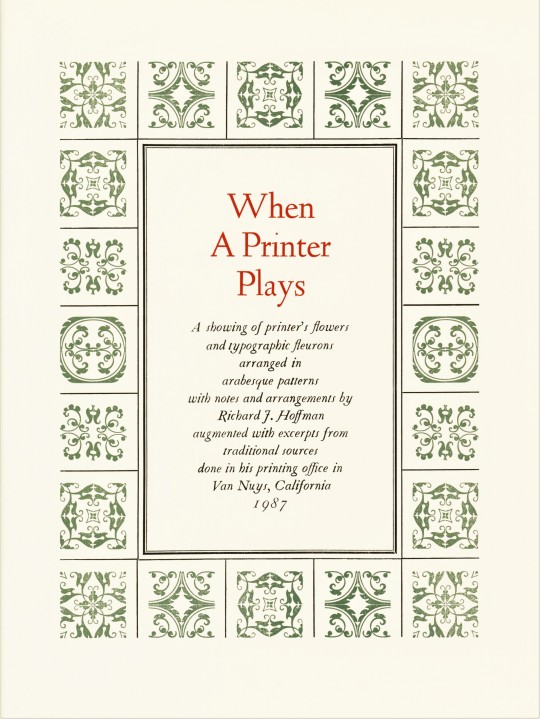
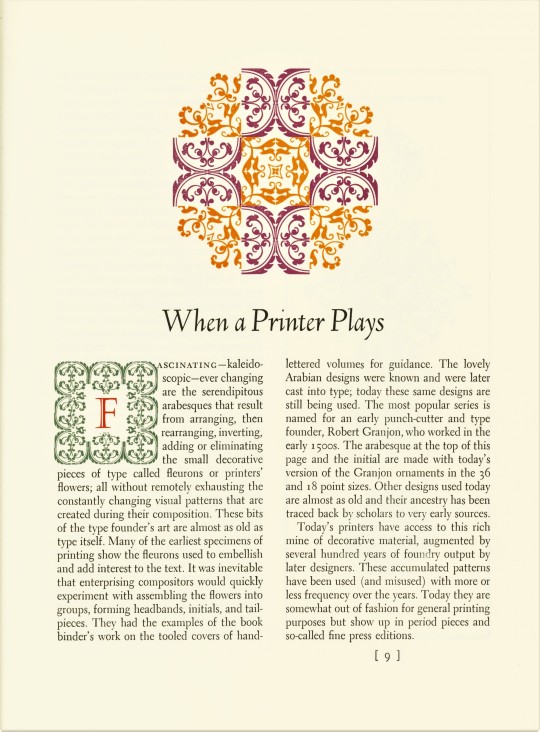

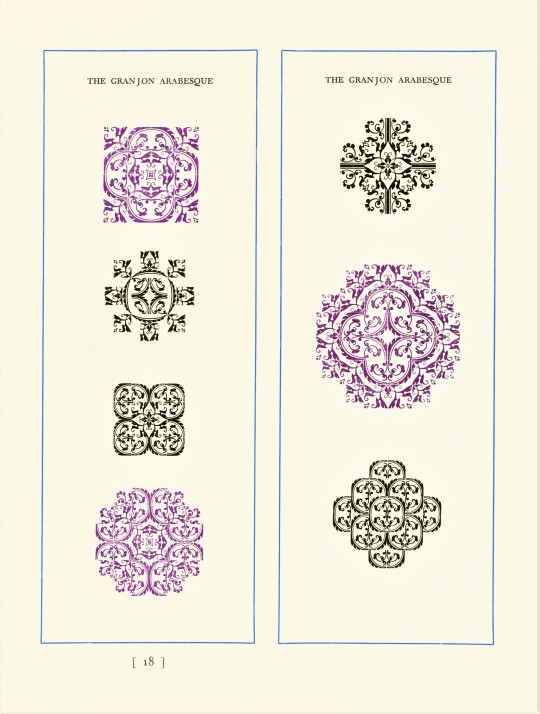



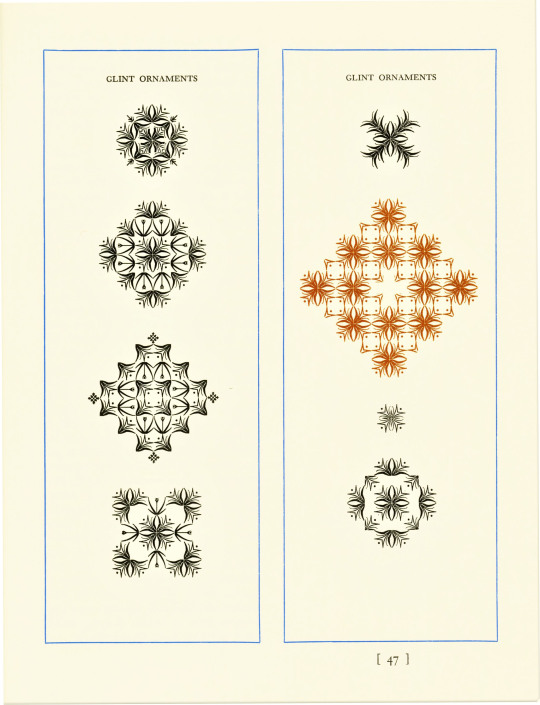


Typography Tuesday
Richard J. Hoffman (1912-1989) was a long-standing letterpress printer and collector of type in the Los Angeles area from 1925 until his death in 1989. One of his final projects was this publication, When a Printer Plays, printed in 1987 at his shop in Van Nuys, California in an edition of 200 copies. The book is an historical presentation of fleurons and printers' ornaments with over 200 designs of his own invention made from individual pieces of foundry and monotype units that he collected over more than 50 years. California rare book dealer John Howell called When a Printer Plays Hoffman's magnum opus, noting that "Hoffman lavished the utmost care upon every detail of typesetting, arrangement, margins, proportions, multi-colored patterns, and illustrations."
Hoffman begins with Garamond and Granjon ornaments first designed in the 16th century and moves toward more contemporary ornaments by designers such as Bruce Rogers, Will Bradley, Thomas Maitland Cleland, David Bethel (Glint Ornaments), and Rudolph Ruzicka (Fairfield Ornaments). All the letterpress printers we know delight in creating borders and designs from typographic ornaments, and Hoffman quotes Bruce Rogers:
When my own time comes to be marooned on a desert island . . . instead of taking along the favorite volumes that most amateur castaways vote for, I think I shall arrange to be shipwrecked in company with a Monotype caster and a select assortment of ornamental matrices. The fascination and amusement . . . that can be got out of the almost numberless combinations of a few simple units would enable me to cast away for an indefinite period with great contentment.
Linotype Electra was used for the text in this book, with Deepdene for display. Our copy of When a Printer Plays is yet another donation from the estate of Dennis Bayuzick.
View more posts of type ornaments.
View other books from the collection of Dennis Bayuzick.
View more Typography Tuesday posts.

#Typography Tuesday#typetuesday#decorative type#type ornaments#Richard J. Hoffman#When a Printer Play#type display books#type specimens#type specimen books#ornamental type#fleurons#Bruce Rogers#Linotype Electra#Deepdene type#Dennis Bayuzick
174 notes
·
View notes
Text

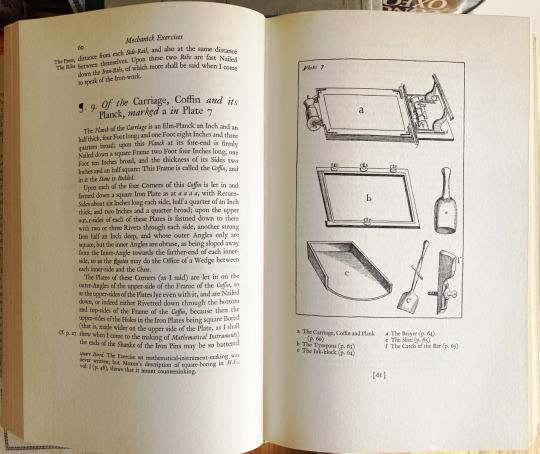
joseph moxon
joseph moxon (1627–91), mathematical instrument maker, & hydrographer to charles ii, added to his skills all those requisite in typography: in 1669 he issued the first complete english typfounders’ specimen [talbot baines reed (a.f. johnson, ed.), A History of the Old English Letter Foundries, faber & faber, london, 1952, p170] .
moxon wrote the Mechanick Exercises, comprising two volumes: volume one addressed smithing, joinery, & building trades in general, & was completed in 1678; volume two on printing issued in sections, 1683-4. illustrated are dust jacket, & spread showing plate 7 that originally appeared facing opening of §10 «Of the Press»—cp. ‹ben franklin’s copy›—from the excellent revised & annotated edition of moxon’s Mechanick Exercises on the whole Art of Printing [herbert davis & harry carter (eds), oxford university press, 1962, pp 60-1]. from the introduction: «His book was by forty years the earliest manual of printing in any language, and it put in writing a knowledge that was wholly traditional.» [ibid., p.vii].
«For almost a century it remained the only authority on the subject; subsequently it formed the basis of numerous other treatises, both at home and abroad, and to this day it is quoted and referred to, not only by the antiquary who desires to learn what the art once was, but by the the practical printer, who may still on many subjects gather from it much advice & information as to what it should still be.» [op.cit., p175].
2 notes
·
View notes
Text
SEO from Media
Lorem Ipsum is simply dummy text of the printing and typesetting industry. Lorem Ipsum has been the industry’s standard dummy text ever since the 1500s, when an unknown printer took a galley of type and scrambled it to make a type specimen book.
It has survived not only five centuries, but also the leap into electronic typesetting, remaining essentially unchanged. It was popularised in the 1960s…

View On WordPress
4 notes
·
View notes
Text
Text Post
Lorem Ipsum is simply dummy text of the printing and typesetting industry. Lorem Ipsum has been the industry's standard dummy text ever since the 1500s, when an unknown printer took a galley of type and scrambled it to make a type specimen book. It has survived not only five centuries, but also the leap into electronic typesetting, remaining essentially unchanged. It was popularised in the 1960s with the release of Letraset sheets containing Lorem Ipsum passages, and more recently with desktop publishing software like Aldus PageMaker including versions of Lorem Ipsum.
Why do we use it?
It is a long established fact that a reader will be distracted by the readable content of a page when looking at its layout. The point of using Lorem Ipsum is that it has a more-or-less normal distribution of letters, as opposed to using 'Content here, content here', making it look like readable English. Many desktop publishing packages and web page editors now use Lorem Ipsum as their default model text, and a search for 'lorem ipsum' will uncover many web sites still in their infancy. Various versions have evolved over the years, sometimes by accident, sometimes on purpose (injected humour and the like).
Where does it come from?
Contrary to popular belief, Lorem Ipsum is not simply random text. It has roots in a piece of classical Latin literature from 45 BC, making it over 2000 years old. Richard McClintock, a Latin professor at Hampden-Sydney College in Virginia, looked up one of the more obscure Latin words, consectetur, from a Lorem Ipsum passage, and going through the cites of the word in classical literature, discovered the undoubtable source. Lorem Ipsum comes from sections 1.10.32 and 1.10.33 of "de Finibus Bonorum et Malorum" (The Extremes of Good and Evil) by Cicero, written in 45 BC. This book is a treatise on the theory of ethics, very popular during the Renaissance. The first line of Lorem Ipsum, "Lorem ipsum dolor sit amet..", comes from a line in section 1.10.32.
8 notes
·
View notes